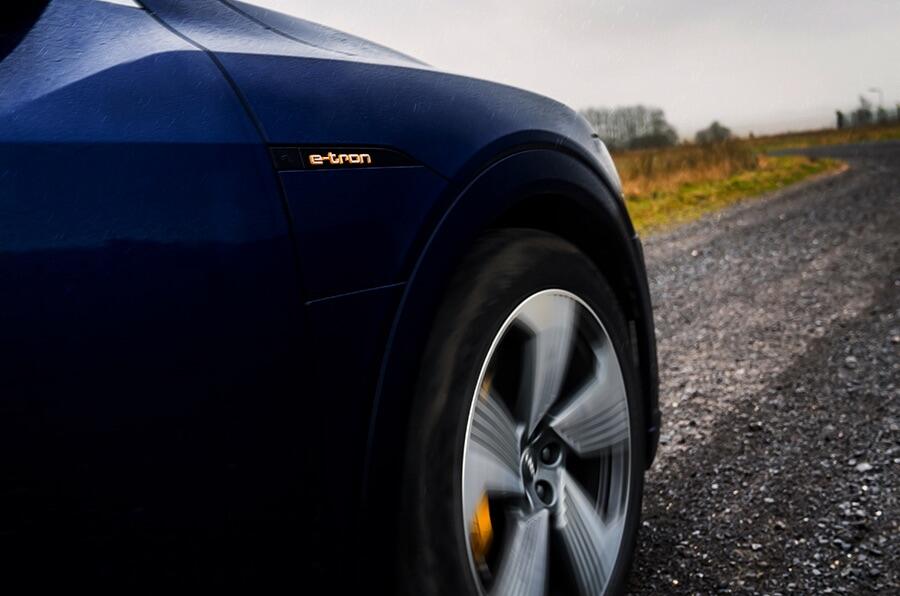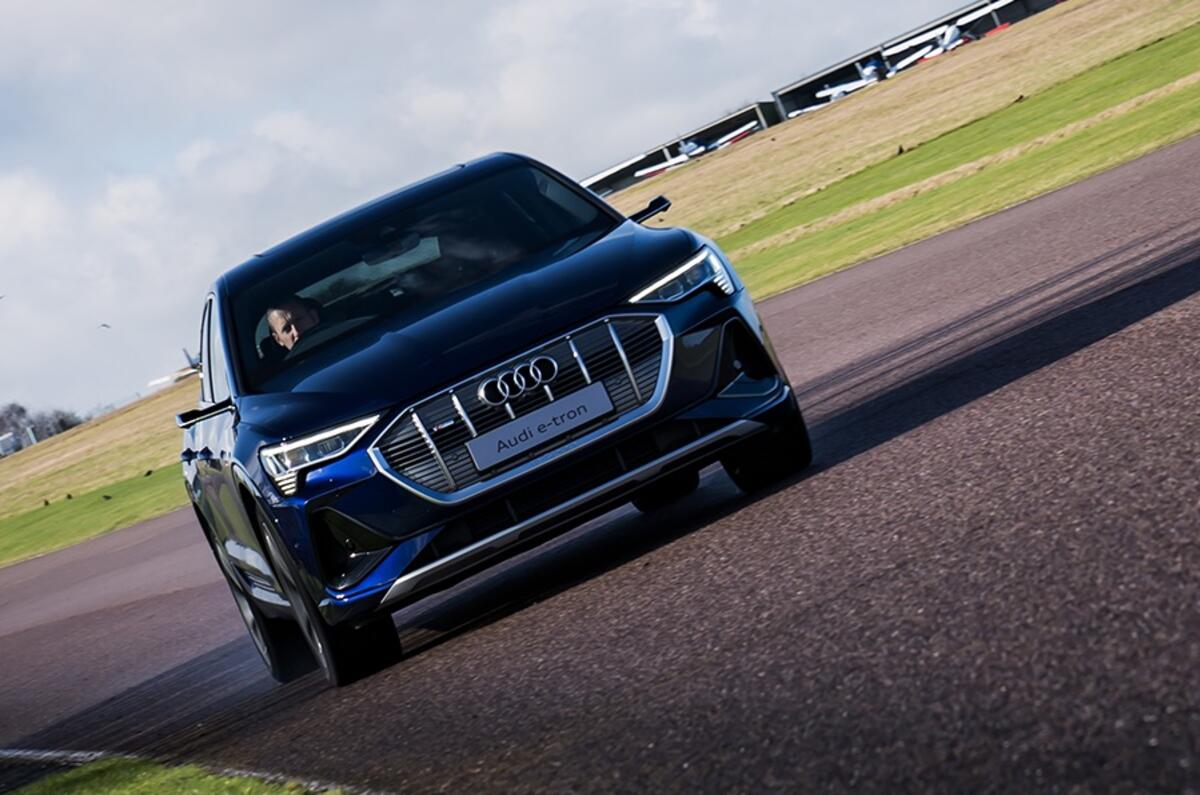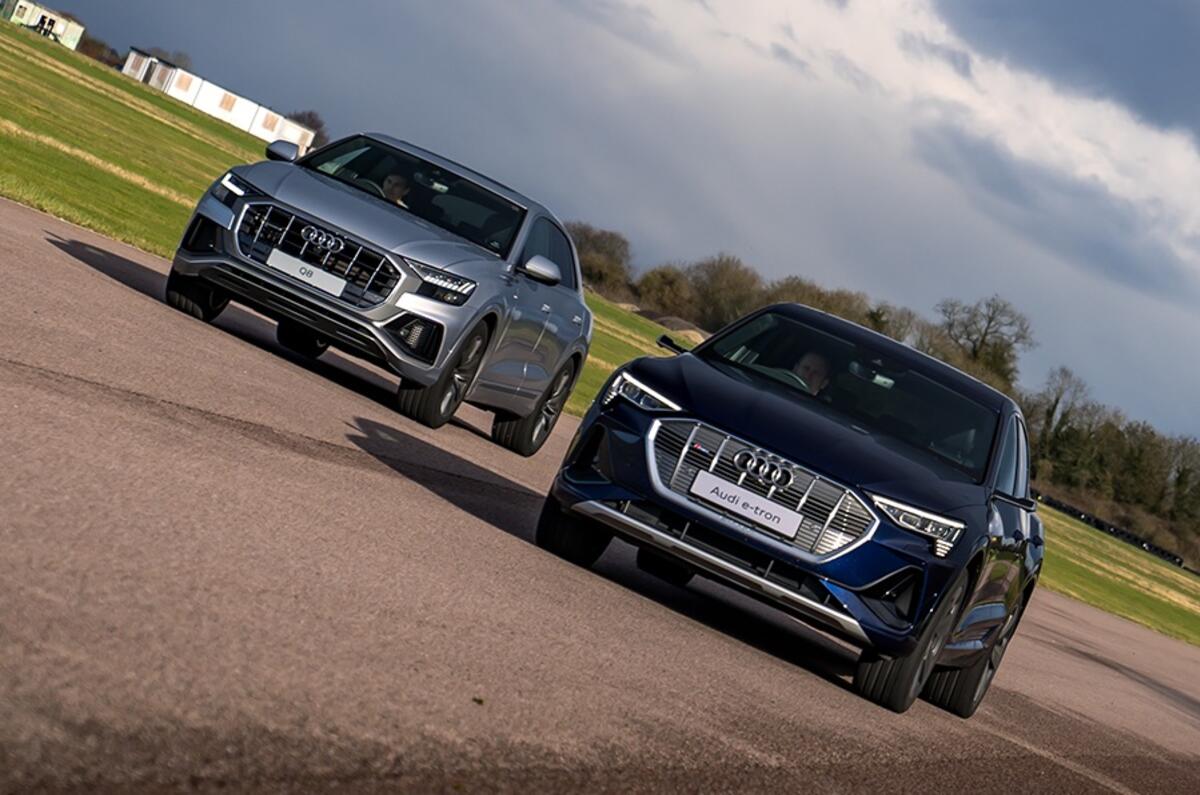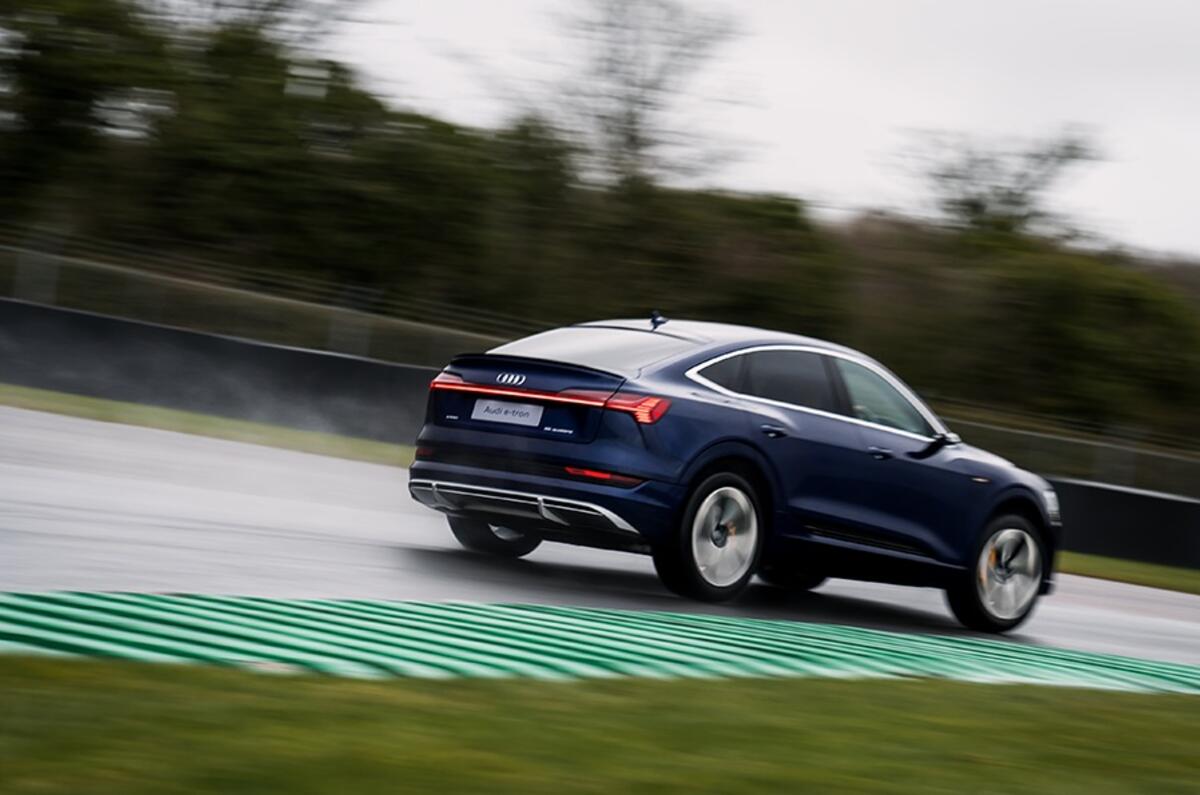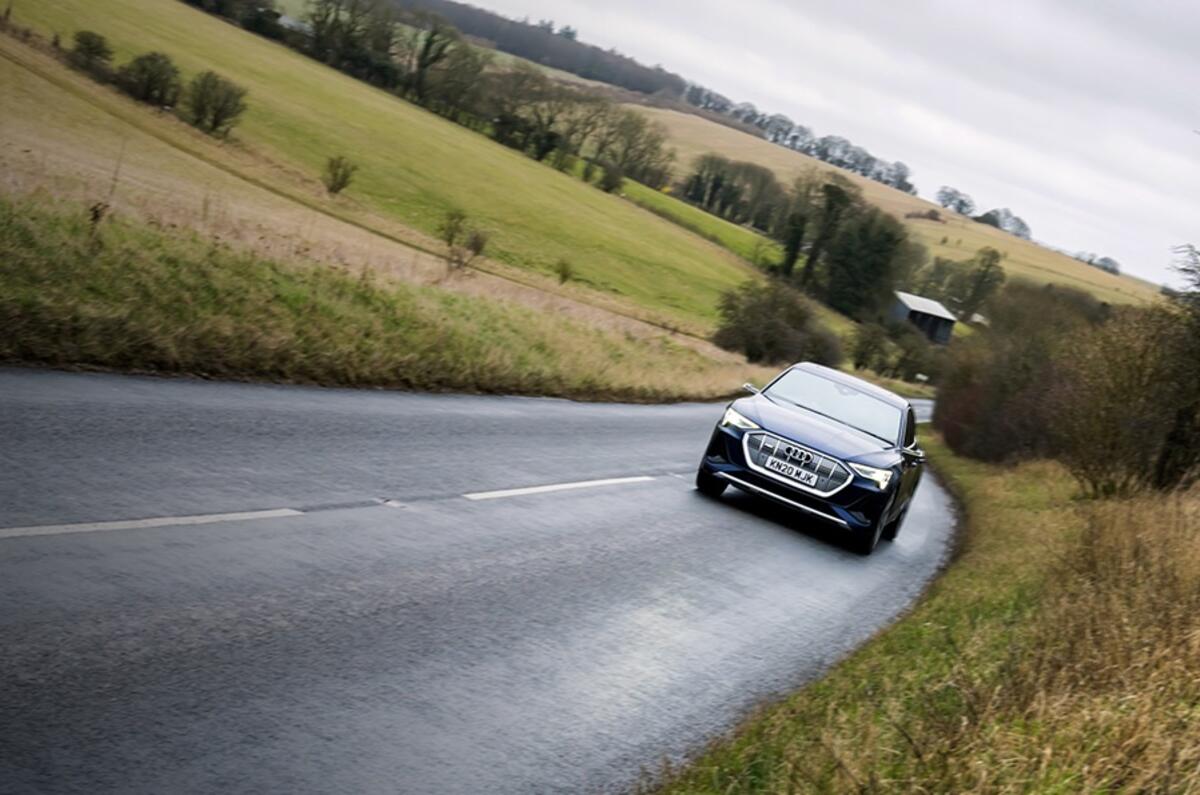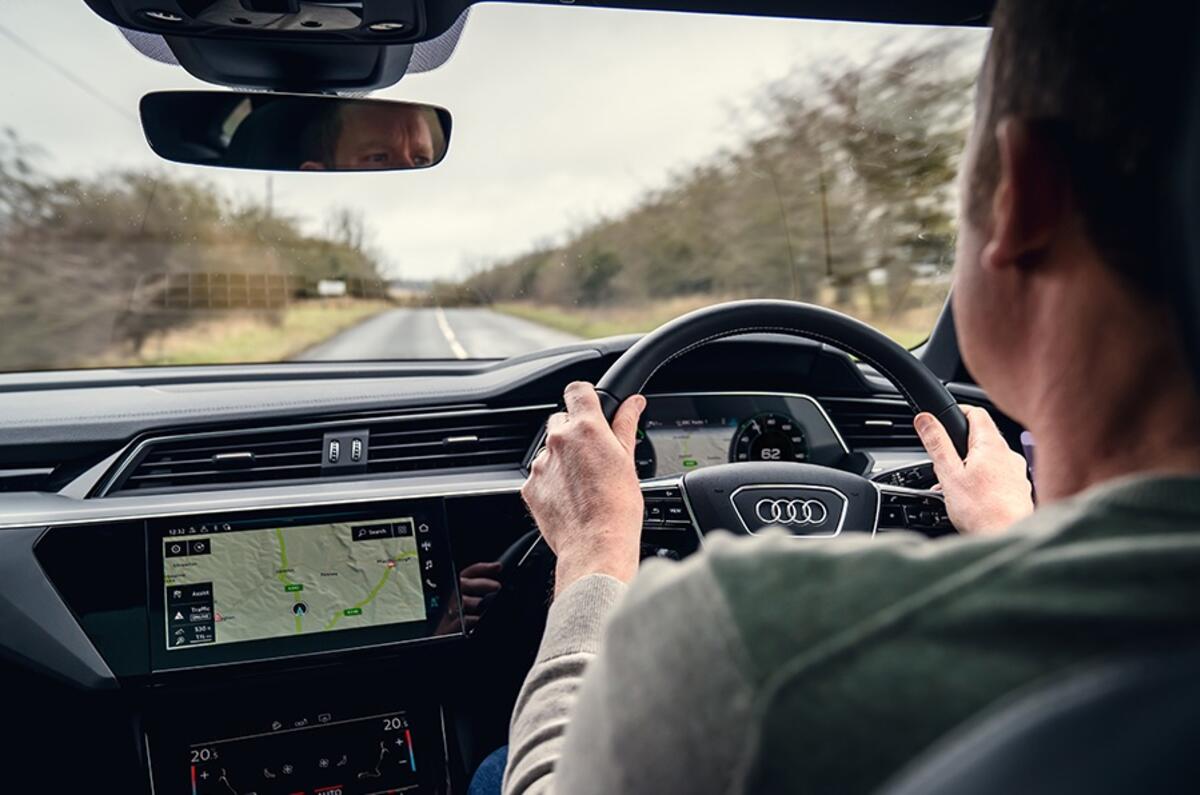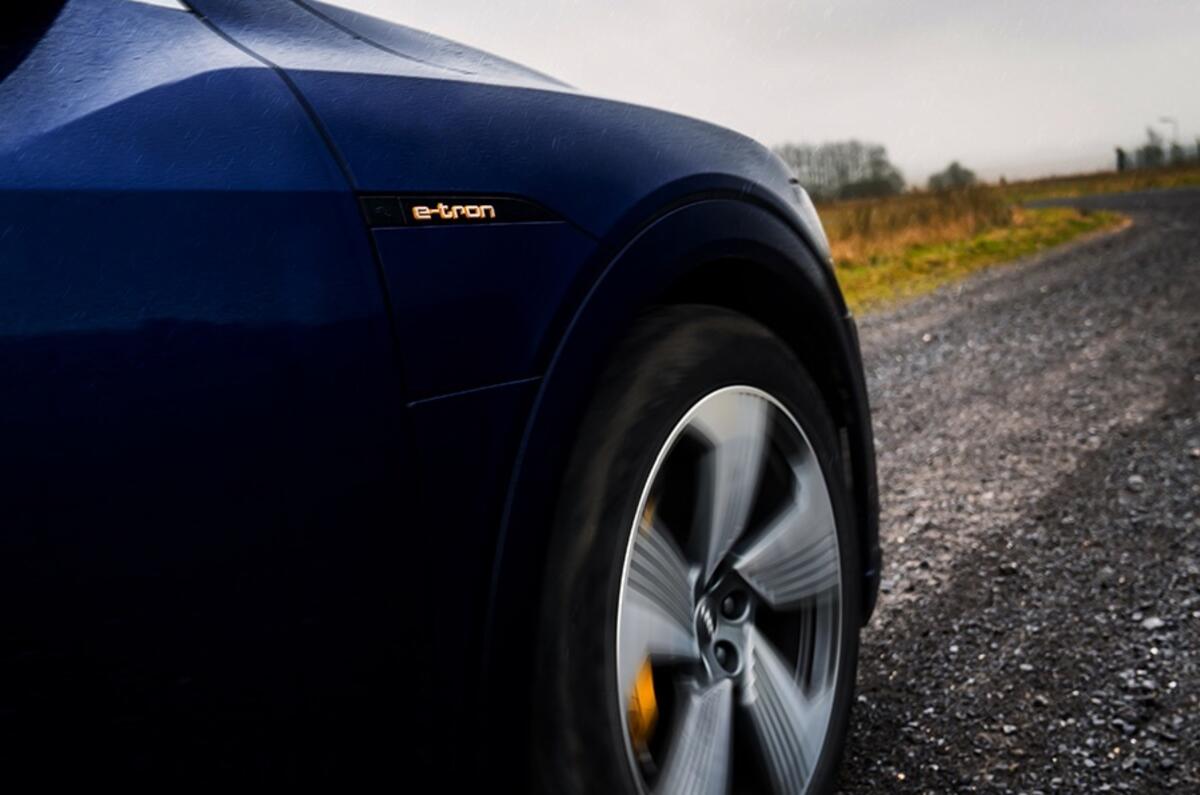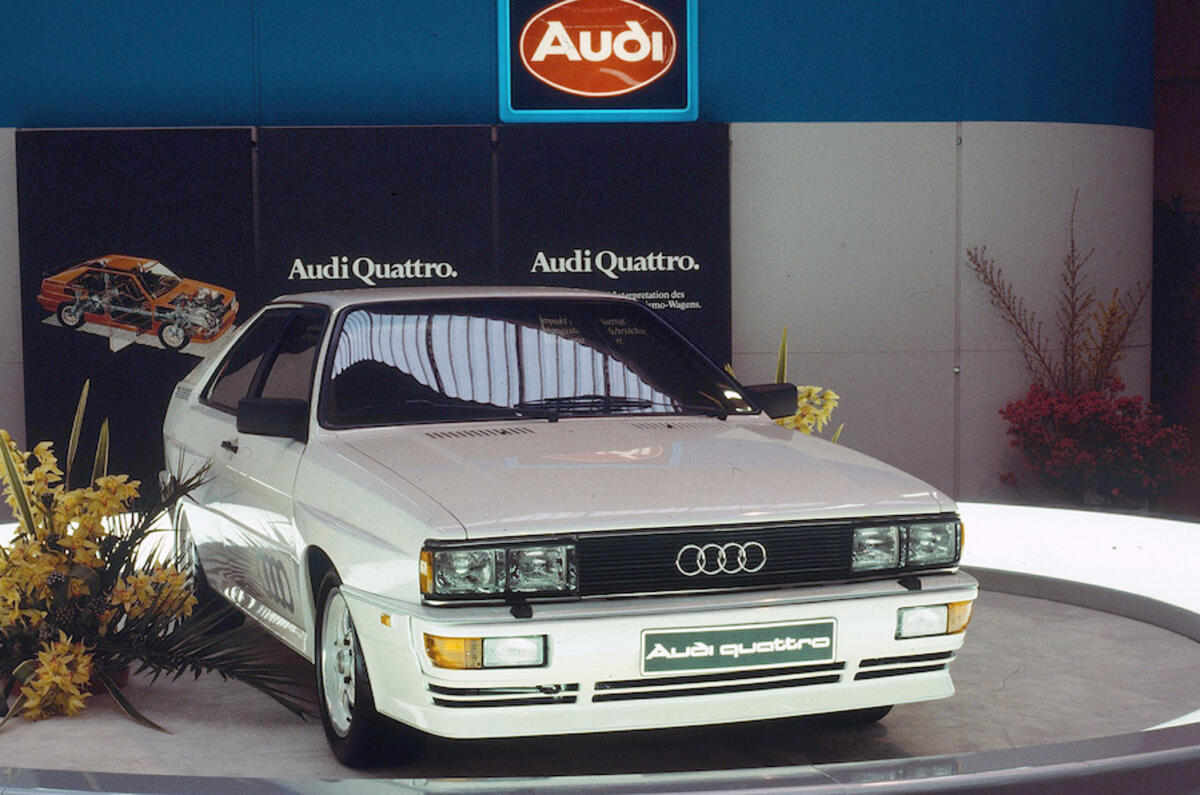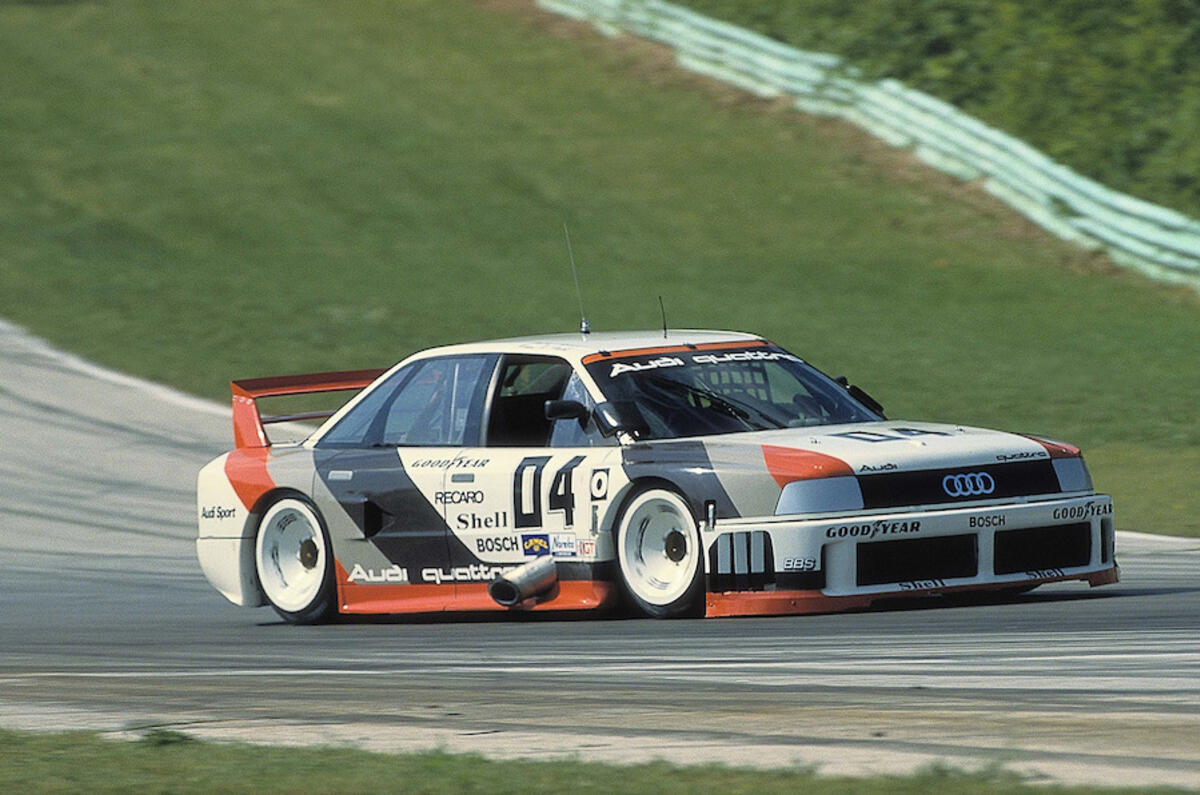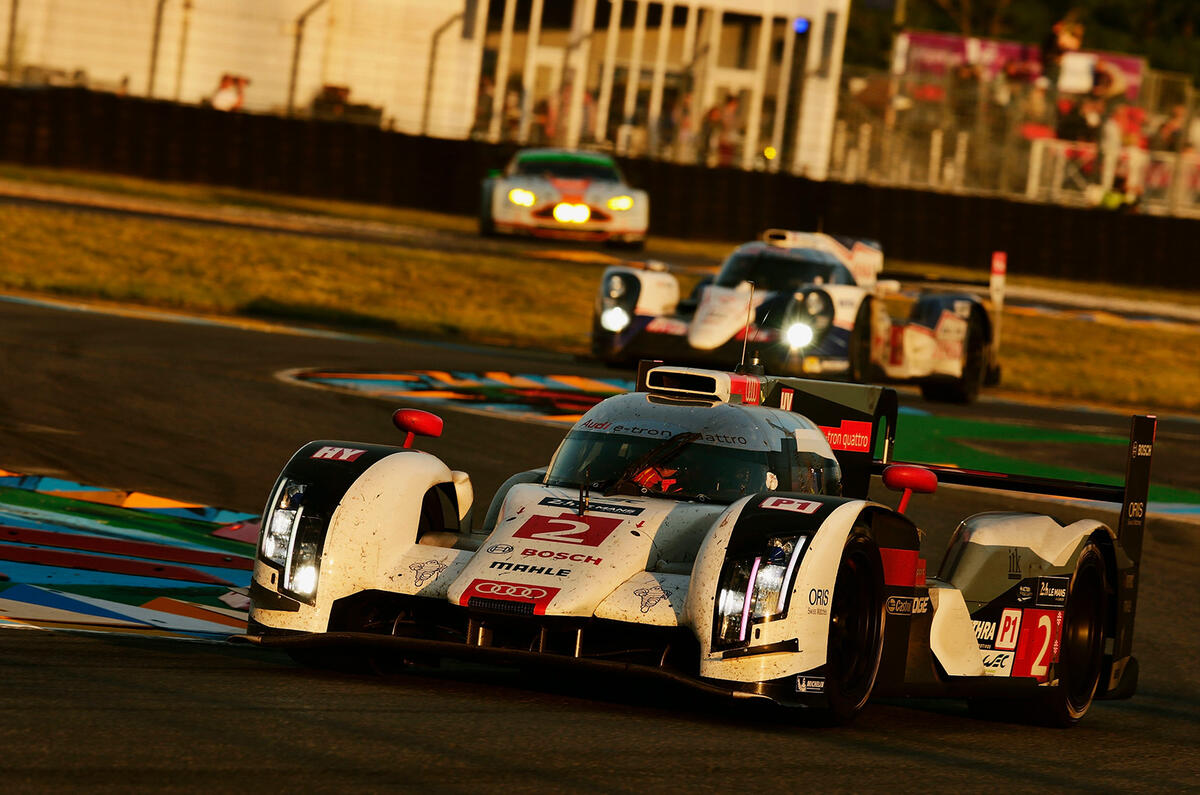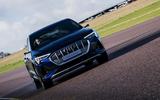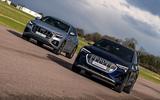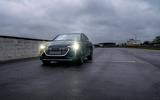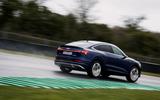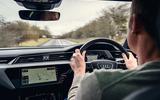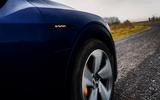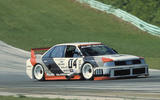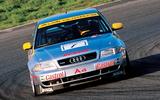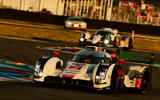Fast sportscar-like acceleration does funny things to your body. Your stomach tightens, your arms tense up, and there’s a compression in your sinuses from the g-forces.
Now, with Audi’s fast-growing range of e-tron models, you can add an electrifying tingle to the hairs on the back of your neck.
If you ever thought the future of electric driving would be dull, the fully charged rush of Audi e-tron quattro grip and stunning Boost Mode acceleration is all you need to change your mind. That’s why we took the Audi e-tron Sportback 55 quattro to Thruxton, the UK’s fastest racing circuit, to see exactly what it could do.
Simply select Dynamic mode, release the brake, floor the throttle and your head is thrust back as the full 408PS and 664Nm of all-electric torque is delivered in one gigantic burst of breath-taking off-the-line electrified quattro traction.
The race from 0-62mph is dispatched in just 5.7 seconds, and – as you continue accelerating towards the e-tron Sportback’s 124mph top speed – there’s no clunky interruption in the power delivery from the ebb and flow of gear changes. Instead, it’s simply a seemingly never-ending wave of power that feels like it could go on forever.
Braking into Thruxton’s Club chicane, the low-mounted positioning of the lithium-ion batteries and air suspension deliver impressive hunkered-down handling that defies the naturally increased weight you get with electric powertrains. Accelerating out of the chicane, you can feel the e-tron Sportback’s front-mounted motor kicking in to deliver extra confidence-inspiring all-wheel-drive traction.
Blending 40 years of all-wheel-drive know-how with the most advanced high-tech all-electric powertrains: this is how Audi e-tron is electrifying quattro performance.
Find out more about Audi’s e-tron range

Born on the rally stage
The concept of quattro all-wheel-drive has been ingrained in Audi’s philosophy of ‘Vorsprung durch Technik’ – or progress through technology – since 1980. All-wheel-drive has been around since pretty much the dawn of the motor car, but its use was primarily limited to rugged off-road vehicles for agriculture, exploring and the military – designed to conquer tough terrain at a slow pace, with a complex set of heavy differentials feeding power to the wheels with the most traction.
The arrival of the Audi quattro in 1980 changed all of that. Using compact, lightweight performance-focused all-wheel-drive technology that was designed more for everyday roads than the back of beyond, it delivered stellar traction, confidence-inspiring grip and sporty performance on all surfaces – whether smooth and grippy asphalt, pockmarked country lanes, rain-soaked roads or loose marble-like gravel.
The Audi quattro road car made its debut at the 1980 Geneva Motor Show, but it was on the stages of the World Rally Championship where the quattro legend was truly born. With three wins in its debut season of 1981, the manufacturers’ title in 1982, the drivers’ title for the late Hannu Mikkola in 1983 and both the drivers’ and manufacturers’ title with Stig Blomqvist in 1984, the Audi quattro blitzed its rivals and revolutionised the sport.
In 1987, Walter Röhrl drove a specially modified version of the new Audi Sport quattro S1 to the 4301m summit of the famed Pikes Peak hillclimb in the Rocky Mountains of Colorado in just 10m48s – a stunning achievement that brought to an end Audi’s time in rallying and off-road racing.
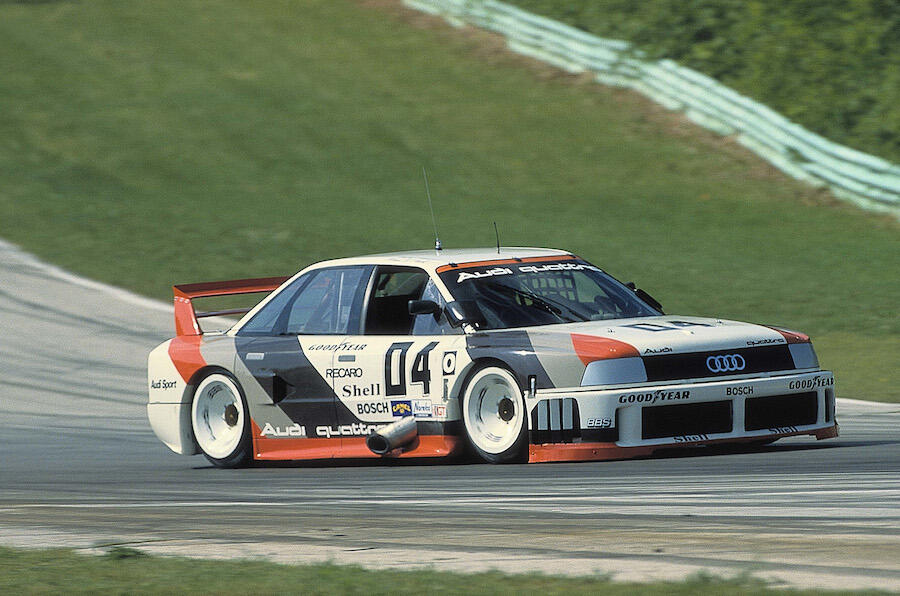
Honed on the track
For 1988, Audi shifted its quattro focus to the race track. In the United States, the Audi 200 quattro won the drivers’ and manufacturers’ titles in the Trans-Am series in 1988, before the larger, lairier Audi 90 quattro GTO dominated the 1989 IMSA sportscar series with seven wins from 13 races – only missing out on the title because the team missed two rounds of the championship.
In Europe, the Audi V8 quattro took two drivers’ titles in the German DTM touring car championship in 1990 and 1991, but Audi’s on-track quattro reputation was really sealed with UK fans in the British Touring Car Championship.
Driven by the popularity and huge growth of sales for saloons for company cars and family cars, the new global FIA Super Touring regulations were designed to create a close link between the cars racing on the track and the cars on our driveways – with 2.0-litre engines and relatively limited cosmetic modifications.
The Audi A4 quattro was one of the heroes of this generation, winning all seven national championships that it entered in 1996 – including the BTCC. But, even as all-wheel-drive cars were banned from Super Touring, Audi was setting its sights even higher.

Electrifying the Le Mans 24 Hours
Since 1999, Audi had used the gruelling challenge of racing twice around the clock in all weathers in the famed Le Mans 24 Hours to hone a series of technologies – from TDI diesel technology to advanced LED and laser headlights – ultimately winning 13 of the 18 races it entered.
In 2012, mid-way through this astonishing streak, Audi added another first to its roster of achievements – winning the Le Mans 24 Hours with both hybrid power and quattro all-wheel-drive. Using electric motors to power the front wheels and a compact lightweight V6 to power the rear wheels, the Audi R18 e-tron quattro was not only faster than its rivals, but also more fuel-efficient – securing three wins in a row and accelerating Audi’s move towards electrification.
Audi’s quattro legacy hasn’t only been felt on the track, though. To date, Audi has produced well over 10.5 million quattro-powered road cars and is currently adding around 800,000 new quattro cars to that total each year. Every Audi model (except the A1) now offers quattro within its line-up (around 45% of all available variants), and all high-performance RS models offering quattro as standard.
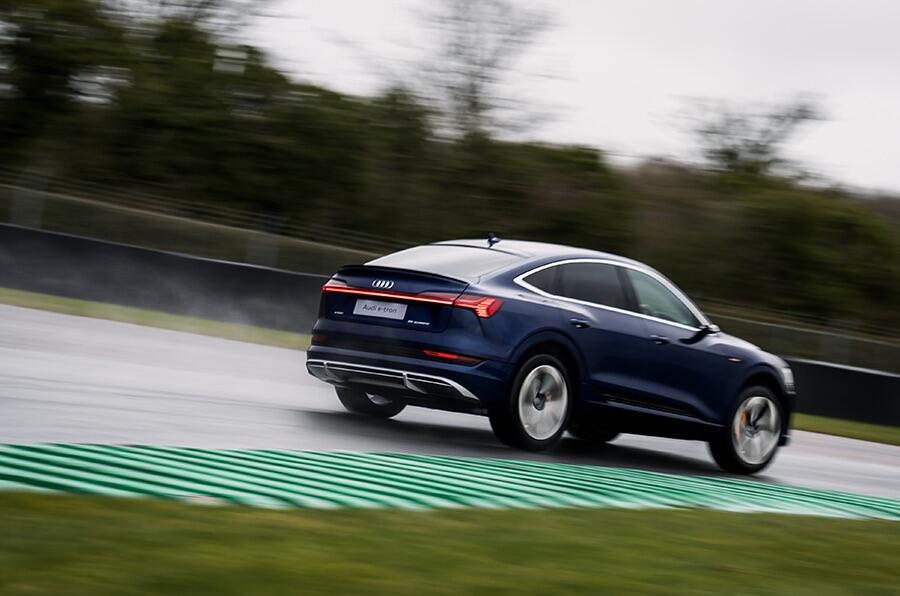
How quattro is transforming e-tron electric power
Now, Audi is electrifying quattro all-wheel-drive for the next generation. The first SUV models in Audi’s fast-growing e-tron line-up – the Audi e-tron and e-tron Sportback – are powered by electric motors on the front and rear axles. Most of the time the e-tron only uses the rear motor for enhanced rear-wheel drive feel. But the front motor is always waiting to step in – instantly delivering more front-end traction if needed.
With 360PS and 561Nm of torque as standard on the Audi e-tron Sportback 55 quattro we took to Thruxton, that not only means impressive acceleration for easy overtaking, but also surefooted grip and confident handling that puts a smile on your face – whether you’re driving on flowing A-roads, or rain-soaked poorly surfaced B-roads.
Audi’s new breed of electric quattro isn’t just quick off the line. Clever packaging keeps all the weight of the Audi e-tron Sportback 55 quattro electric motors and 95 kWh lithium-ion batteries low in the chassis – helping it feel hunkered down and impressively agile in the corners. At higher speeds, the responsive adaptive air suspension even lowers the ride height – creating a lower, sleeker profile that cuts more efficiently through the air.
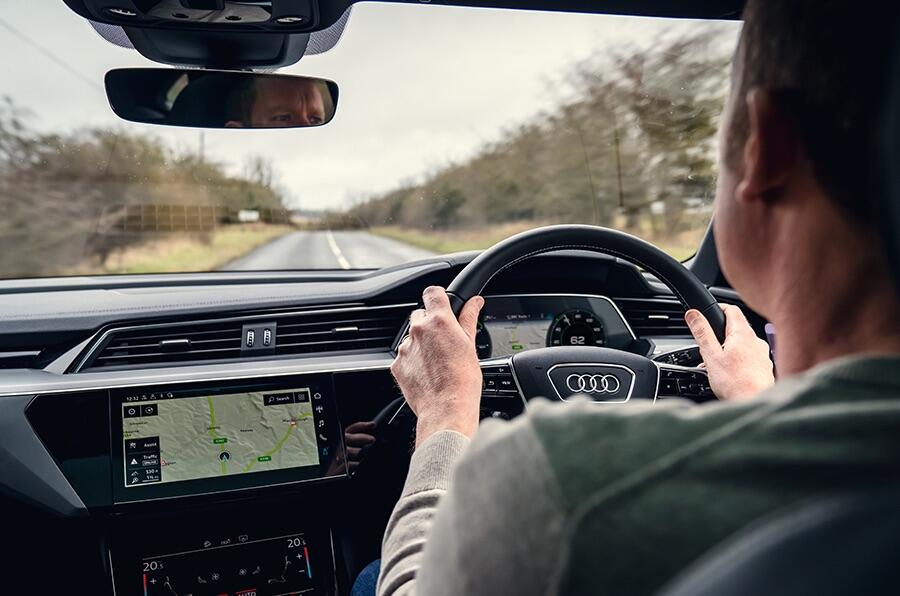
The final trick up Audi’s e-tron electric quattro sleeve is regenerative braking. On the Audi e-tron quattro 55 Sportback, this recovers up to 30 percent of the e-tron’s range during normal deceleration, delivering up to 257 miles of driving thrills.
The high-performance Audi e-tron S and e-tron Sportback take things to another level. At the back, two independent electric motors on the rear axle allow for electric torque vectoring – with millisecond response optimising power delivery between each of the rear wheels to provide the right balance of power and grip under intense acceleration. It’s similar to a mechanical limited-slip differential, but far faster.
The front motor steps in when needed to give added traction, while selective torque control tweaks the inside front brakes to help the car rotate more confidently into corners or improve traction on corner exit. The result: 0-62mph in just 4.5 seconds. And that electrifying tingle on the back of your neck.
Find out more about Audi’s e-tron range
